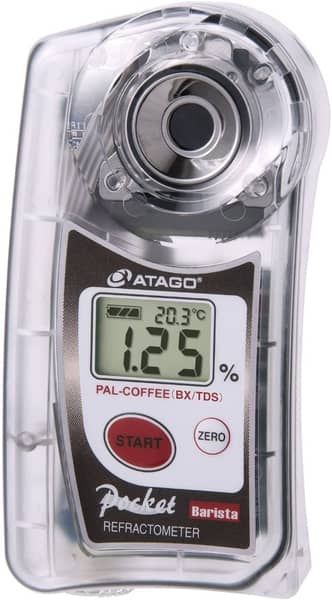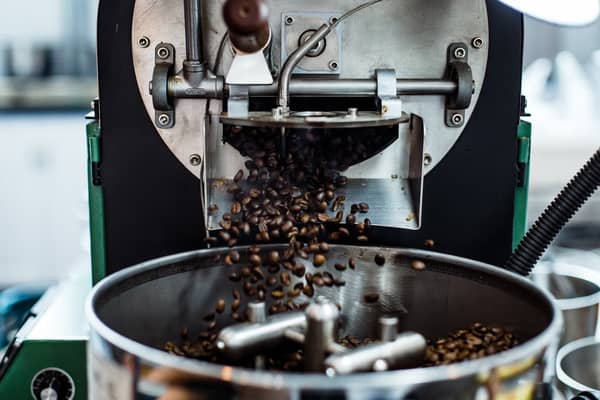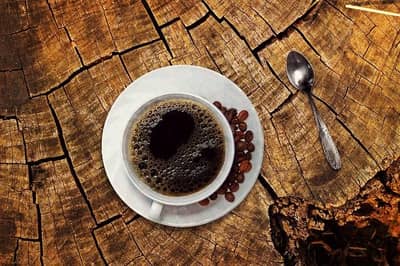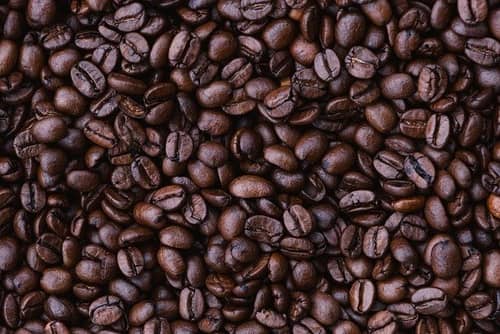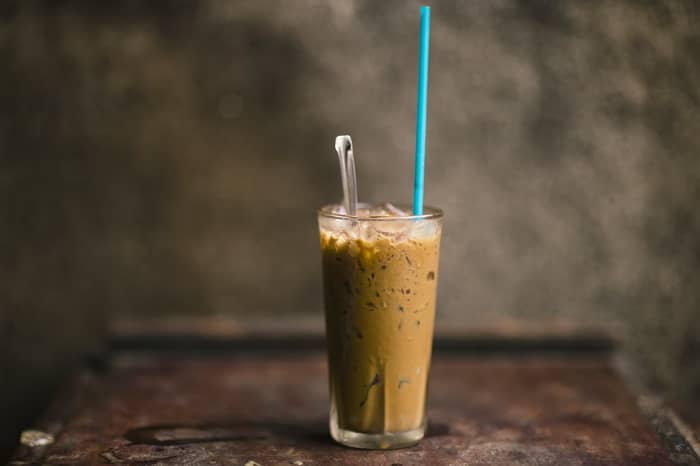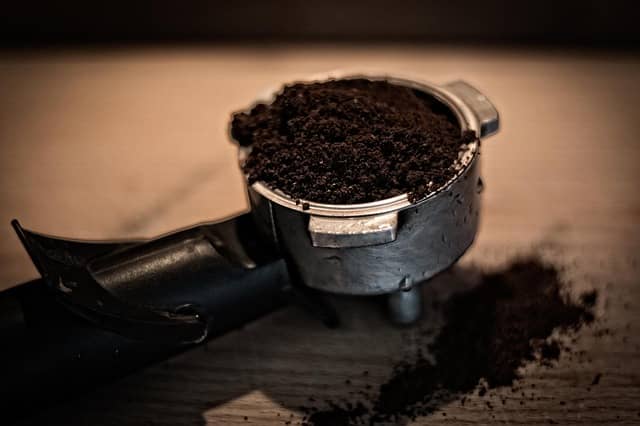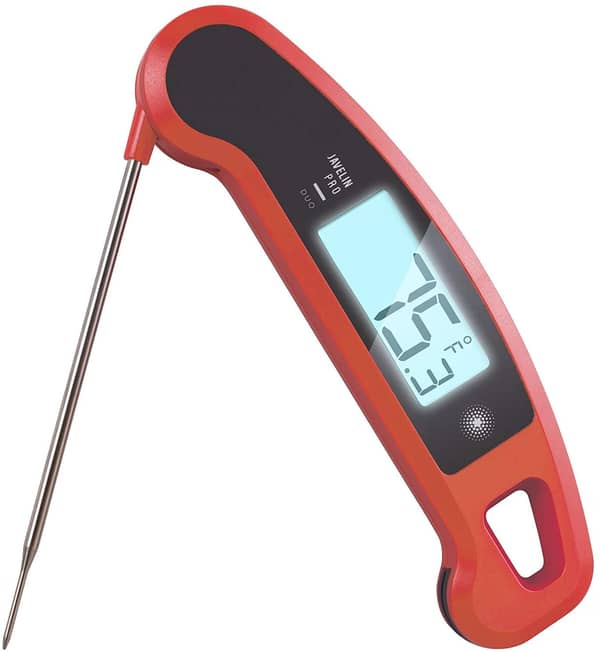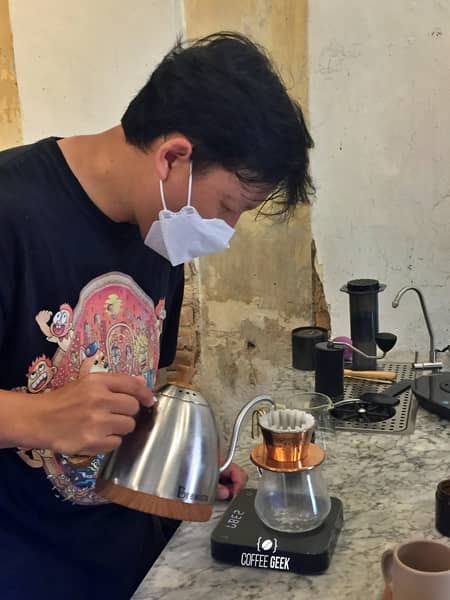Do you love the taste of a rich, dark cup of coffee? Do you find yourself struggling to make a pot that has the desired level of strength and intensity? Worry no more!
In this article, our coffee blog will help coffee lovers understand what strong coffee is and show you exactly how to make strong coffee at home with 8 straightforward tips!
By following these simple steps, you’ll be able to make a cup of coffee that is both strong and delicious. So get ready to take your java game up a notch!
What Does It Mean If Coffee Is Strong?
If you ask a coffee drinker what strong coffee is, you’re likely to get a lot of different answers.
For some people, strong coffee simply means coffee that has a lot of flavors. For others, strong coffee is coffee that packs a serious caffeine punch. Some only drink coffee that isn’t watered down with milk or creamer.
So when someone asks you if your coffee is strong, they could be asking about any of these things. Usually, it’s the first 2 – either the coffee is strong in flavor, or it has high caffeine content.
But from the technical standpoints of the:
Specialty Coffee Association
The Specialty Coffee Association [SCA] measures the brew strength in Total Dissolved Solids (TDS).
The higher the TDS is, the more coffee solids are extracted and concentrated in the hot coffee cup, and the stronger the brew is considered to be, regardless of the roast profile of the coffee beans.
And, the more coffee is dissolved in the cup, the higher the caffeine content is, generally speaking.
So, if your cup of coffee has a high TDS, you can expect it to be strong in terms of both flavor and caffeine.
But, the average coffee drinker doesn’t have a TDS measuring device lying around at home. So, while it’s a good measure for coffee professionals, it’s too complicated for your morning routine.
Moving on to the…
Coffee Roasters
The coffee roasters also have their own rating system to define the coffee strength.
When buying a bag of coffee, many home baristas tend to rely on the coffee strength numbers written on the bag to pick what they think they’d prefer.
What do coffee strength numbers mean?
This rating system doesn’t actually “accurately” indicate the strength of the brew, as they merely reflect how dark the roast profiles are. The darker the roast is, the higher the number is.
Does that mean using dark roasts can help you brew stronger coffee and/or more caffeine? Not exactly. The answer is much more complex than you think.
1. Flavor-wise
There are many types of coffee beans in existence. Their distinct varieties, origins, and growing conditions give them varying characteristics. So you can’t apply the same roasting profile for all coffee beans and expect the same result.
Each of them requires a different approach to roast depth to best bring out their unique flavors and boast their coffee strength. A medium profile should be optimal for one, while dark may be necessary for another.
With that said, generally, dark-roasted coffee can be perceived as stronger-tasting.
The coffee beans tend to be roasted for a longer time, which cracks them open more than lighter roasts. This allows more natural oils to come to the surface. And the more rounded body gives the drink the impression that it has a stronger flavor.
2. Caffeine-wise
Little do many coffee drinkers know that dark roast coffee doesn’t have more caffeine, despite their “impression” of a stronger coffee taste.
That’s because the longer the coffee beans are roasted, the more original compounds are broken down, including their caffeine content.
So, if anything, it can have even less caffeine than a medium roast.
The bottom line is, that the coffee strength numbers on the bag aren’t the most reliable as far as coffee strength is concerned. But, it can still be used as a good reference for the roast profiles.
If the coffee you bought doesn’t give you quite the strength you’re looking for, you can experiment with the roasts to see if it can be improved.
What Makes A Strong Coffee?
Since our definition of strong coffee may be different, I’ll go on based on the popular idea that the coffee is flavorful and/or have a strong caffeine kick.
Below are 8 factors that contribute to a strong coffee, including an expert guide on how to make strong coffee drinks (or weaker brews).
1. Freshness
How you grind your coffee beans and how fresh they are can have a big impact on the strength of your brew.
If you want to make the coffee stronger, you’ll want to use freshly ground coffee. This is often neglected by home baristas who use pre-ground coffee for convenience.
When coffee beans are ground, their surface area increases, exposing more of the oils and compounds that give coffee its flavor.
The longer the coffee grounds sit before brewing, the more exposure they have to oxygen. And they become stale and lose flavor.
So, if you want strong coffee, make sure to buy fresh whole beans (roasted within the last 2 weeks) and grind them up right before brewing to get that strong coffee you’re craving.
And, while you’re not using the beans, make sure to store them in an airtight container to limit their exposure to the outside environment.
2. Type Of Coffee Beans
There are 2 common types of coffee in the market: Arabica and Robusta.
Arabica beans are grown at high altitudes and have a sweeter, milder flavor, making them the better choice for a pleasantly bold taste
Robusta beans are considered to be inferior because of their bitter taste and grainier flavor. But, they are higher in caffeine.
So if your ideal strong cup is one with a strong kick, consider getting a blend of both Arabica and Robusta to get a higher energy recharge and an interesting balance in flavors.
The traditional espresso shot also uses a blend of both beans, so don’t be afraid to go off the popular 100% Arabica specialty coffee track.
If you don’t mind the bitter flavor in your strong coffee, you can also opt for 100% Robusta beans, which isn’t uncommon in countries that grow them, like Vietnam with their refreshing Vietnamese Iced Coffee (Just make sure to use a lot of sweetness to balance out the bitterness).
3. Roast Level
As previously explained, dark roast doesn’t necessarily indicate stronger coffee. But it does give your cup of coffee a heavier body and a smokier flavor that can be perceived as a bolder taste.
So, if that’s what you’re used to, continue to do so! You can try different types of dark roast coffee, such as Viennese Roast, Espresso Roast, and French Roast.
But not all coffee’s flavors shine the most with a dark profile, so if you’re not satisfied, venture to the medium roast realm (and medium-dark roasts!) as well, such as Breakfast Roast, City Roast, and Full City Roast.
And, if you’re looking to get more caffeine from your morning coffee, consider light roast beans. They aren’t roasted for as long, so a lot of the original compounds still remain, including caffeine.
It’s also a great option for those who are looking for something with more acidity and less bitterness. You can start with the Cinnamon Roast or the popular Starbucks Blond Roast.
Don’t know any of these names? Learn the common types of coffee roasts with us!
4. Grind Size
It’s no secret that brew strength can be a balancing act.
If you use coffee ground too coarse, you could end up with weak, watery coffee. On the other hand, if you use too fine of a grind, your coffee might be too strong.
So what’s the perfect grind size for strong coffee? It depends on the brewing method and coffee maker you use.
For example, if you’re using a French Press, you’ll want to use coarse ground coffee than you would for regular brewed coffee made with a drip machine.
This is because the longer brewing time for French press coffee allows for more extraction, so a finer grind would result in over-extracted, bitter coffee.
But, the general guideline for each brewing method and coffee maker may not suit you personally.
So, if you like stronger coffee, you can experiment with a finer grind so that more of the coffee’s flavor is extracted. Conversely, if you prefer a weaker brew, you should go for a coarser grind.
However, there’s a limit to this due to other factors involved in the brewing process.
Back to the French Press example. The device’s metal mesh filter isn’t the best at filtering out finer ground coffee.
So, you want to avoid using grinds that are too fine for the filter unless you don’t mind drinking a cup of French Press with more sludge than usual.
And, the amount of time the coffee grounds are in contact with water also affects the strength of the brew, so keep that in mind when you’re adjusting the grind size to avoid an over-extraction.
There’s no right or wrong size – it all comes down to personal preference. So just experiment and see what works best for you.
5. Coffee-To-Water Ratio
Another important factor you should keep in mind is how much coffee grounds and water to use when making strong coffee.
Similar to the grind size, this depends on what brew method you’re trying to follow. And you need to find the right balance of coffee and water to optimize their contact (extraction) and water flow.
With too much coffee (too little water), the brew can be over-extracted and bitter; with too little coffee (too much water), it can be under-extracted, weak, and watery with a sour taste.
You should follow the Golden Ratio of the brewing method, and if that doesn’t work, adjust accordingly to your personal preference.
Basically, if you use more coffee beans (more coffee grounds), a stronger flavor can be expected. This is because there’s more coffee to extract from, and it will delay the flow of water to bring more flavor and body to the drink. And vice versa.
But, keep in mind that too much coffee can make the drink too concentrated and even taste bitter with unpleasant flavors (unless that’s what you want!). So try to find the perfect ratio.
Generally, for reference, the Golden Ratio for brewing coffee like drip coffee is 1 – 2 tablespoons (5 – 10 g) of ground coffee for every 6 oz (177 ml) of water.
You can also try making double-brewed coffee. The double brewing technique helps achieve a stronger cup with a stronger caffeine kick as well!
There are 2 ways to double brew:
- Double the coffee-to-water ratio AKA double the amount of grind you use
- Make the second batch but replace water with the brewed coffee made from the first batch
This method is especially great for iced coffee which is often deemed too diluted once the ice cubes melt. So, for a stronger cup of iced coffee this summer, give this technique a try.
It’s also a great way to get a stronger-tasting cup similar to specialty coffee using drip coffee makers when you don’t feel like committing to an espresso machine yet.
6. Water Temperature
Brewing the perfect cup of strong coffee is a delicate process, and another critical variable is the water temperature.
If the water is too cold, it won’t extract all of the flavors from the beans, resulting in a weak and watered-down brew. On the other hand, if the water is too hot, it can burn the beans, giving the coffee a bitter flavor.
For most brewing methods, the ideal temperature is between 195 and 205 degrees Fahrenheit (91 – 96 degrees Celsius). This range allows for optimal extraction of flavors without making the coffee too strong or too weak.
Keep an eye on the temperature next time you’re brewing coffee, especially when making manual brews like French Press and Pour-Overs, and you’ll be sure to enjoy a delicious cup.
You can utilize a water thermometer to get the temperature accurate. Otherwise, bring the water to the boiling point, and let it cool down for around 30 seconds, allowing it to drop to the near-boiling point, before using it to brew coffee.
7. Brew Time
Along with the water temperature, you should pay attention to the brew time as well. The longer the coffee steeps, the stronger it will be.
So if you find the recommended brew time for your coffee brewing method still not long enough to extract as much flavor as you desire, you can try to adjust the grind size (finer) and/or coffee-to-water ratio (more coffee) to lengthen the brew time.
Unless you’re making an immersion brew like French Press, then just simply let it sit in the hot water for a longer time.
But, keep in mind that this won’t have a very big effect on caffeine extraction as, generally, most of the caffeine content can be extracted within the first 30 seconds – a minute of brewing. The change is much more significant in an espresso shot that’s often pulled in just 25 – 30 seconds.
And, if you want weaker coffee, do the reverse. Experiment until you find the perfect combination for your taste buds!
8. Brew Method
The type of coffee brewing method you use can have a big impact on the strength of your brew.
For instance, if you’re looking for a strong cup of coffee, brewing methods like the French Press, espresso, or Turkish coffee will give you a fuller-bodied and intense flavor.
On the other hand, if you prefer a more diluted coffee, methods like drip coffee or Pour-Over will be more ideal.
If you enjoy espresso but find it too strong, you can add hot water on top to make a regular cup of Americano.
Experiment with different brewing methods and bean roasts until you find your perfect cup of coffee.
To Wrap Up
I hope these 8 tips have helped you know where to start to make strong coffee at home. Feel free to experiment with your coffee at home until you do, and let me know what your favorite way to make strong coffee is!
FAQs
Does Fine Ground Coffee Make It Stronger?
Yes, generally, as it allows more contact with the hot water for flavor extraction. But try not to go overboard, otherwise, you’ll be stuck with over-extraction. And mesh filters of devices like French Press cannot keep filter grounds that are too fine, and you’ll end up with a cup of Joe with a lot of loose grounds.
Does Stronger Coffee Mean More Caffeine?
Not necessarily, as each person’s definition of coffee strength varies. So, though it’s true for some, others look for a flavorful Joe or a heavy body.
What Is The Strongest Tasting Coffee?
There are many coffee brands marketed as the strongest coffee ever, primarily emphasizing the amount of caffeine that they can bring to the table. A good brand for “strongest coffee” to start from is Death Wish Coffee, which can supply you with 472 mg of caffeine in an 8 oz serving.
Can You Make Coffee Too Strong?
No. There’s no such thing as brewing coffee too strong – it’s all about personal preference! Some people like their coffee bold and robust, while others prefer a milder and more diluted flavor. #loveislove
Does More Water Make Coffee Stronger?
No, more water dilutes the brew more, making it not as concentrated. So, you can’t make coffee taste stronger with more water.

![How To Make Strong Coffee [8 Tips To Transform Your Brew] 2 How To Make Strong Coffee](https://coffeegeek.tv/wp-content/uploads/2022/04/How-To-Make-Strong-Coffee-8-Tips-To-Transform-Your-Brew.jpg)

